- Selling
- Buying
- Landlords
- B&R Landlord hub
- Management services
- Vacant management
- Landlord reviews
- Rental investment
- Furnishing and refurbishment
- Yield calculator
- Free online valuation
- Stamp duty calculator
- ROI calculator
- Landlord resources
- EPC guide
- Video hub
- Area guides
- Fees for landlord
- Lettings Laws
- Why choose Benham and Reeves
- Renting
- New homes
- House prices
- International services
International offices
China, Hong Kong SAR, India, Indonesia, Malaysia, Middle East, Pakistan, Qatar, Singapore, South Africa, Thailand and Turkey
Learn more - Contact
- News
- Contact
- About us
- My B&R
Is Kensington still considered prime property?
|
Getting your Trinity Audio player ready...
|
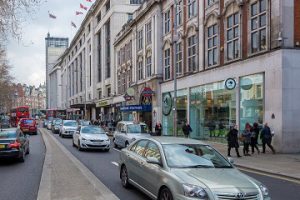 Any lingering doubts about Kensington’s reputation as one of the Prime Central London districts can easily be settled by taking a stroll down its vibrant main thoroughfare. Starting at the majestic museum quarter and ending at the ornate gates of Holland Park, Kensington High Street cuts a glamorous route through the entire area. In between, there are perfect examples of Instagram-friendly streetscapes, stunning facades and pristine period architecture: the area is a visual feast from start to finish.
Any lingering doubts about Kensington’s reputation as one of the Prime Central London districts can easily be settled by taking a stroll down its vibrant main thoroughfare. Starting at the majestic museum quarter and ending at the ornate gates of Holland Park, Kensington High Street cuts a glamorous route through the entire area. In between, there are perfect examples of Instagram-friendly streetscapes, stunning facades and pristine period architecture: the area is a visual feast from start to finish.
Property for sale in Kensington is predictably in the high-end price bracket and according to Rightmove, average sale prices exceeded £2.2m. The majority of these were flats or apartments averaging £1.5m and houses fetching up to £7m. This was considered to be a poor performing year for property in W8 with the postcode seeing zero capital growth but now presents new opportunities for investors to get a property here at 2016 prices.
Read more about the post-pandemic reversal of decline in prime central London property
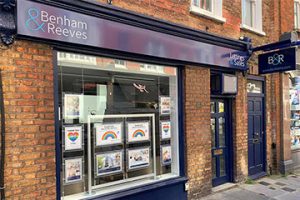 As a residential location, Kensington compares with the best in Europe and individuals (and many celebrities) who live here continue to promote and enjoy a deep sense of community, cohesiveness and sustainability. Benham and Reeves have firs-hand knowledge of the area, having operated from our lettings and estate agent branch in Thackeray Street since 1995.
As a residential location, Kensington compares with the best in Europe and individuals (and many celebrities) who live here continue to promote and enjoy a deep sense of community, cohesiveness and sustainability. Benham and Reeves have firs-hand knowledge of the area, having operated from our lettings and estate agent branch in Thackeray Street since 1995.
Money can’t buy you historical clout
With new mega shopping malls springing up on the outskirts of west London and shiny riverfront developments overlooking the Thames to the south, can Kensington stay relevant? The answer is a resounding yes as new property developments like
375 Kensington High Street and handsome refurbished buildings like Pitt Street W8 are building on a solid and historic foundation. Like its neighbouring areas; Mayfair, Chelsea, South Kensington and Knightsbridge, these areas are deeply rooted in history with royalty having occupied Kensington Palace since the late 1700s. The streets, museums and buildings around the Royal Albert Hall are a living memorial to Queen Victoria’s much-loved husband, Prince Albert. Just across the Hyde Park is Kensington Palace, another royal connection, as it is the home to the Duke and Duchess of Cambridge and you simply cannot buy or manufacture that kind of profile. Heading west, you pass award-winning restaurants, boutique hotels and any top designer brand you can think of. The side streets are typified by beautifully preserved Georgian and Victorian terraced houses that look out onto immaculate garden squares, complete with those distinctive wrought-iron railings made famous by the Mary Poppins movie.
A place for the discerning family
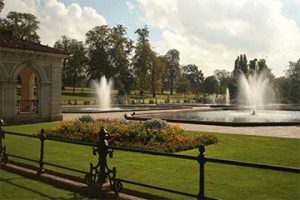 Buying a property here is not only buying into history, but it is also investing in London’s future because diplomats and celebrities are not the only ones who find Kensington or prime central London irresistible. To a new breed of young, super-solvent corporate professionals, the tranquil parks and leafy squares are the perfect place to bring up young families. Top independent schools are as easy to find here as designer shoe shops and the Natural History, Science and V&A museums are ideal for informal educational days out. Higher learning is an integral part of Kensington’s heritage. Imperial College and the Royal College of Music are world-leading centres of excellence that continue to attract the best and brightest minds from around the globe. Many property investors buy here so their student children have a place to stay throughout their education years and go on to keep the property in the private rental sector which provides a good income.
Buying a property here is not only buying into history, but it is also investing in London’s future because diplomats and celebrities are not the only ones who find Kensington or prime central London irresistible. To a new breed of young, super-solvent corporate professionals, the tranquil parks and leafy squares are the perfect place to bring up young families. Top independent schools are as easy to find here as designer shoe shops and the Natural History, Science and V&A museums are ideal for informal educational days out. Higher learning is an integral part of Kensington’s heritage. Imperial College and the Royal College of Music are world-leading centres of excellence that continue to attract the best and brightest minds from around the globe. Many property investors buy here so their student children have a place to stay throughout their education years and go on to keep the property in the private rental sector which provides a good income.
Three neighbourhoods, three sets of advantages
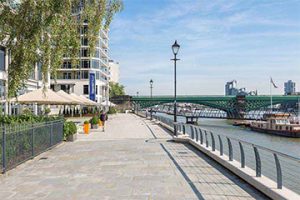 So, when it comes to Prime Central London, Kensington has the culture, Mayfair the bling and Chelsea the river. Easy, right? Well, as with all generalisations, there is some truth in that statement, but things get more interesting when you dig deeper. Mayfair does, indeed, have some of the most incredibly exclusive retail spaces in the world, but it is also home to many thriving independent art galleries and some great pubs. Chelsea’s riverfront has been utterly transformed and the views from gleaming new developments like Imperial Wharf and Chelsea Creek are incredible, yet there is a flourishing antiques scene at the lower end of Kings Road. Kensington hosts the annual patriotic-fest “the Last Night of the Proms” at the Royal Albert Hall, just around the corner from a well-established French enclave, complete with its own particular shops, restaurants and bookstores. You can even live right in the centre of the Capital and soak up ambience and culture on your doorstep with boutique living in new schemes like
So, when it comes to Prime Central London, Kensington has the culture, Mayfair the bling and Chelsea the river. Easy, right? Well, as with all generalisations, there is some truth in that statement, but things get more interesting when you dig deeper. Mayfair does, indeed, have some of the most incredibly exclusive retail spaces in the world, but it is also home to many thriving independent art galleries and some great pubs. Chelsea’s riverfront has been utterly transformed and the views from gleaming new developments like Imperial Wharf and Chelsea Creek are incredible, yet there is a flourishing antiques scene at the lower end of Kings Road. Kensington hosts the annual patriotic-fest “the Last Night of the Proms” at the Royal Albert Hall, just around the corner from a well-established French enclave, complete with its own particular shops, restaurants and bookstores. You can even live right in the centre of the Capital and soak up ambience and culture on your doorstep with boutique living in new schemes like
W1 Place, an exquisite property development located a stone’s throw from Oxford Circus which is selling fast.
New property developments have the power to transform even established areas
Proximity to the West End is what binds these neighbourhoods together. They share the same convenient transport links, entrepreneurial zeal and ability to reimagine their property landscape without destroying it. These areas are prime in every sense of the word and their respective property markets have withstood the triple shocks of Brexit, Covid and war in Europe with a shared, robust confidence – exactly what buy-to-let investors are looking for. An interesting difference between them, however, is how their attitude to new developments continues to shape and influence the London property landscape.
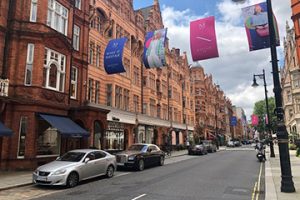 Mayfair is the most pushed for space and is therefore reliant on apartment conversions in order to expand its housing stock. Planning permissions have been relaxed somewhat and developers have been quick to come up with imaginative solutions like the merging of multiple properties into one. A good example of this is Clarges Mews which was defunct office space, re-purposed into prime space for residential housing. Meanwhile, Chelsea has cashed in on its uniquely photogenic Thames shoreline and this has effectively split the district into two distinct zones. North of Kings Road is the old Chelsea with its neat Georgian squares and pretty gardens, while all the glitzy new developments merge along the Thames path and form a riviera-style quarter where luxury high-rise apartments overlook superyachts, riverside restaurants and tree-lined piazzas which look towards neighbouring Fulham.
Mayfair is the most pushed for space and is therefore reliant on apartment conversions in order to expand its housing stock. Planning permissions have been relaxed somewhat and developers have been quick to come up with imaginative solutions like the merging of multiple properties into one. A good example of this is Clarges Mews which was defunct office space, re-purposed into prime space for residential housing. Meanwhile, Chelsea has cashed in on its uniquely photogenic Thames shoreline and this has effectively split the district into two distinct zones. North of Kings Road is the old Chelsea with its neat Georgian squares and pretty gardens, while all the glitzy new developments merge along the Thames path and form a riviera-style quarter where luxury high-rise apartments overlook superyachts, riverside restaurants and tree-lined piazzas which look towards neighbouring Fulham.
Kensington has taken a more organic approach. Most of its new property developments lie on its fringes and have therefore been free to grow into distinct mini-neighbourhoods. Packed with five-star facilities and close to a much wider variety of shops, schools and eateries offering the best balance of luxury accommodation and urban-based convenience.
Stampede to the suburbs? Central London remains calm
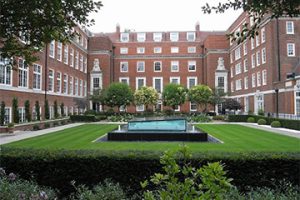 Kensington and its neighbours continue to be a solid choice for any investor who puts long-term capital growth over quick profits. After an understandably sluggish two years, house prices in Prime Central London are climbing at two per cent – their fastest rate for nearly seven years. This fact will vindicate anyone whose nerves held steady as others offloaded their property in order to rush to the suburbs. PCL Buyers still comfortably outnumber sellers and it looks like staying that way for some time to come.
Kensington and its neighbours continue to be a solid choice for any investor who puts long-term capital growth over quick profits. After an understandably sluggish two years, house prices in Prime Central London are climbing at two per cent – their fastest rate for nearly seven years. This fact will vindicate anyone whose nerves held steady as others offloaded their property in order to rush to the suburbs. PCL Buyers still comfortably outnumber sellers and it looks like staying that way for some time to come.
If you are thinking of selling your London property or buying a new property for yourself or as a rental investment, get in touch now with our Kensington Sales team for free advice, a valuation and a local market update.
Sign up to our newsletter
Subscribe
How much is your property worth?














